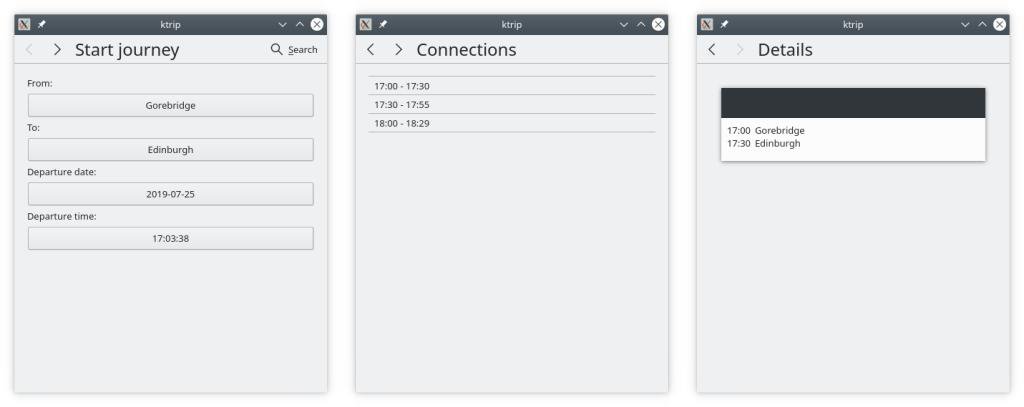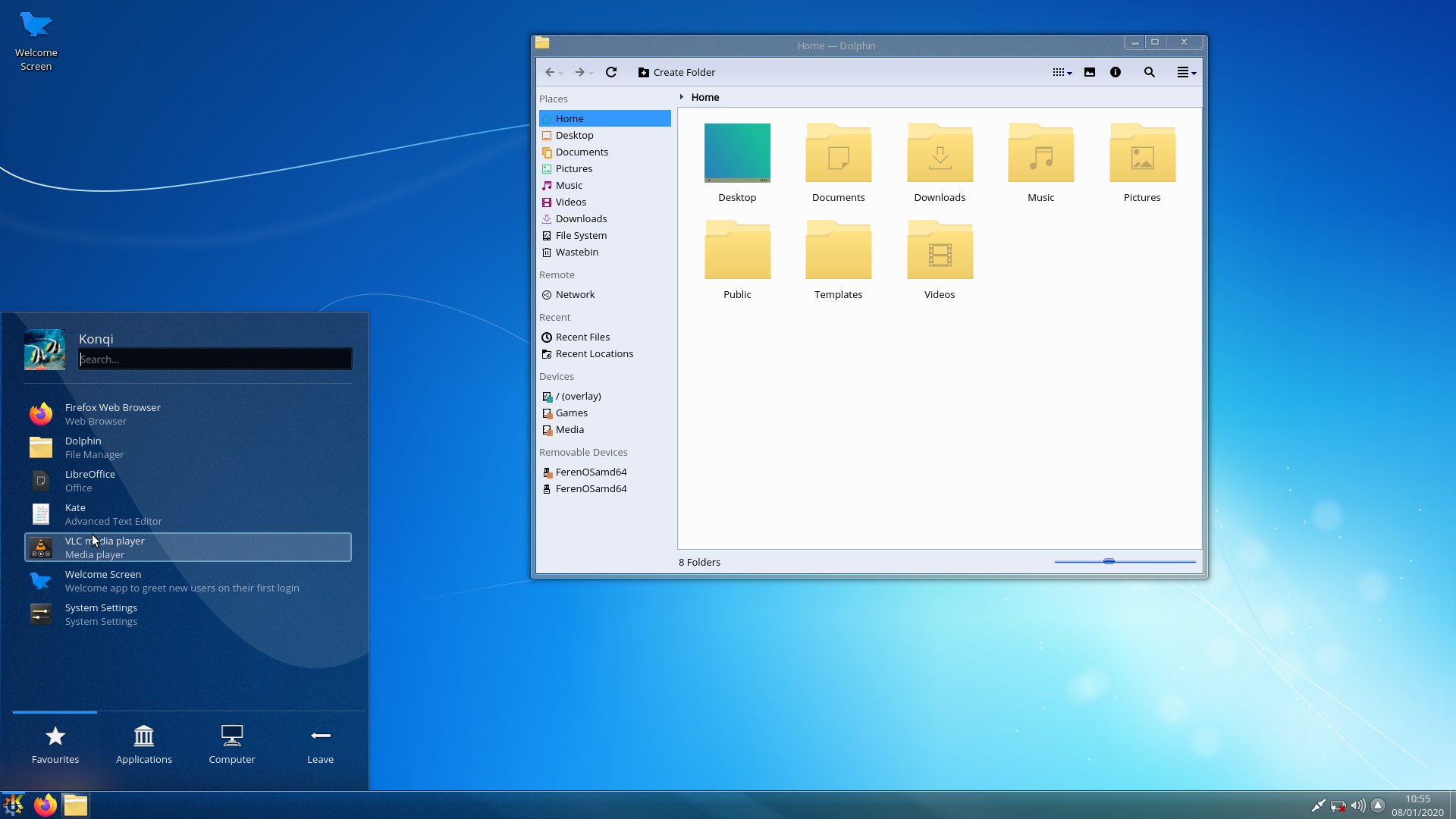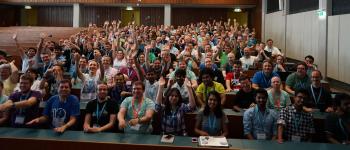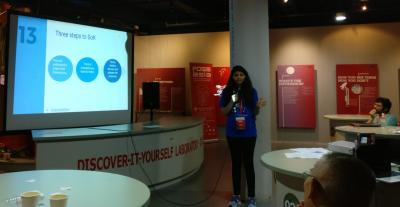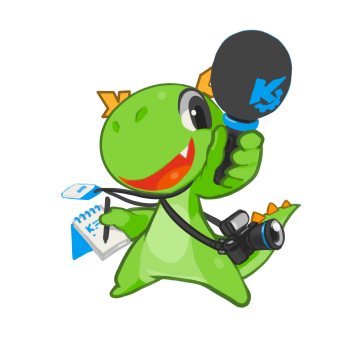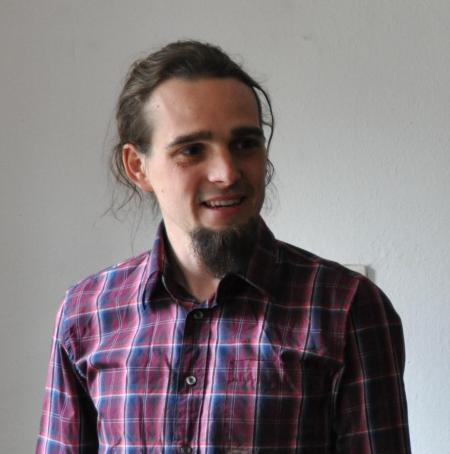Applications
-
Step up and become a Friend of GNOME!
(GNOME)
The GNOME project is built by a vibrant community and supported by the GNOME Foundation, a 501(c)(3) non-profit charity registered in California (USA). The GNOME community has spent more than 20 years creating a desktop environment designed for the user. We‘re asking you to step up for GNOME and become Friend of GNOME. We're working to have 100 new Friends of GNOME join by January 6, 2020.
-
5 Things to Look Forward to in Krita 4.0
(KDE)
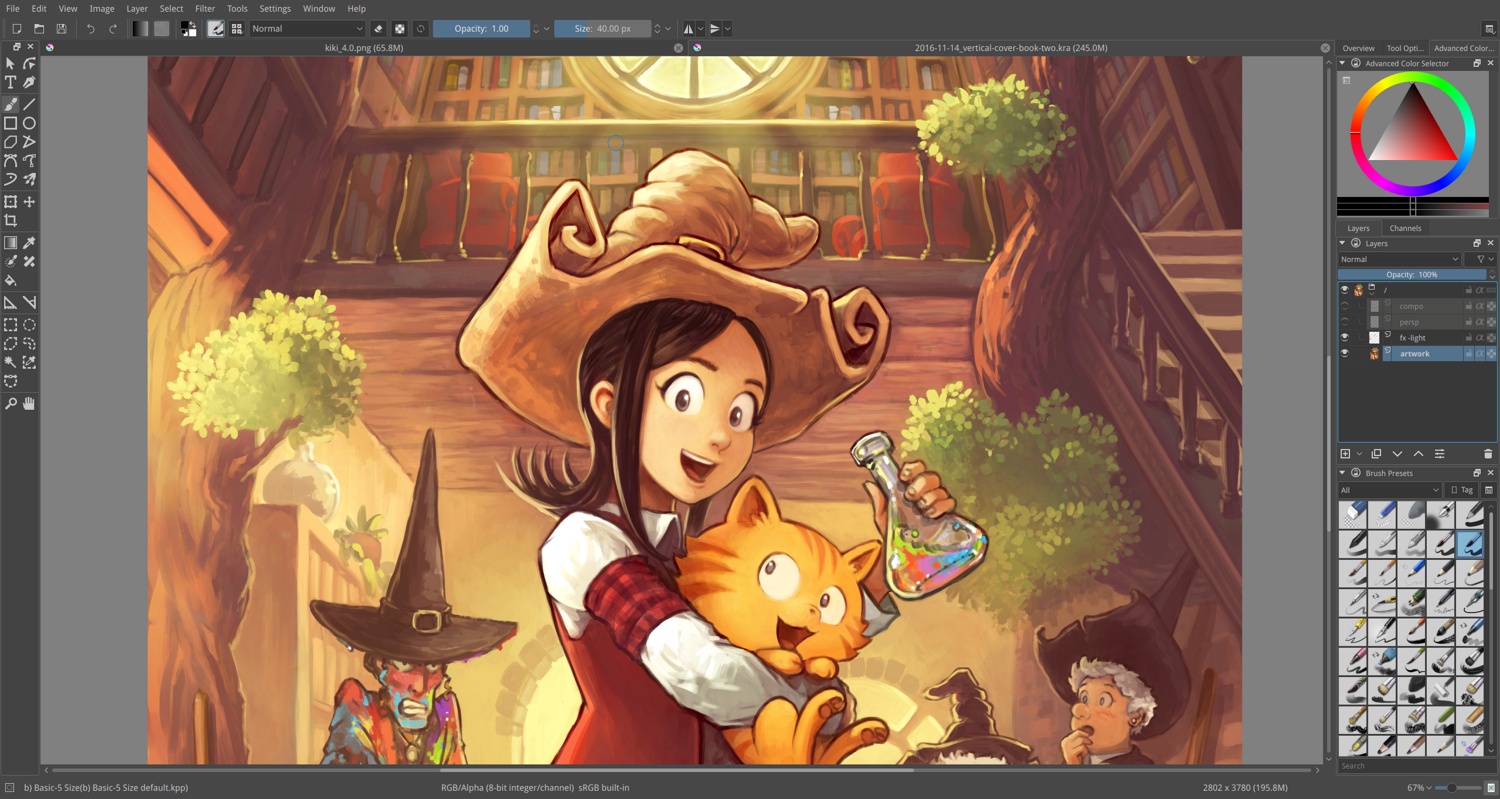
That Krita has become one of the most popular applications for painting among digital artists is an understatement. The great thing is that, with every new version, Krita just gets better and better. The latest release is a perfect example of that. Check out what you can look forward to in the new 4.0 version:
1. SVG for Vector Tools
Krita 4.0 will use SVG on vector layers by default, instead of the prior reliance on ODG. SVG is the most widely used open format for vector graphics out there. Used by "pure" vector design applications, SVG on Krita currently supports gradients and transparencies, with more effects coming soon.
Krita 4.0 also includes an improved set of tools for editing objects created on vector layers, letting you tweak the fill, the shape, and other features of your vector elements.
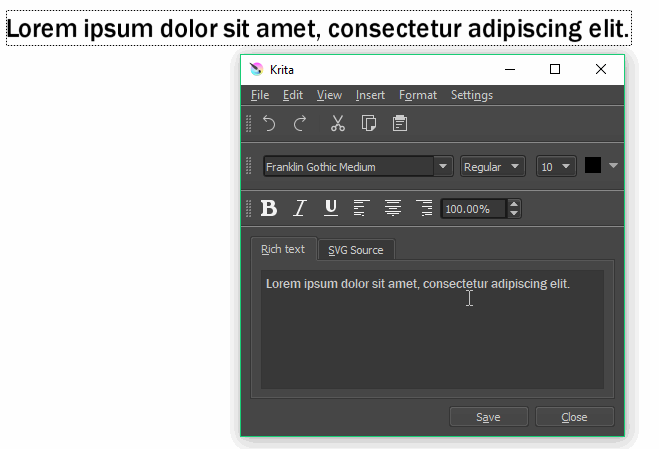
The text tool is now more reliable and more usable. 2. New Text Tool
The usability of the text tool has been vastly improved. The tool has been re-written to be more reliable, and has a better base for future expansion. As it also follows the SVG standard (instead of the prior ODT), it is compatible with more design applications.
3. Python Scripting
Krita now comes with a brand new Python scripting engine. This engine lets you write snippets of code that create and manipulate images, add dockers, entries to the menu, and much more. To get you started, the creators have included a large amount of example scripts. In Krita's Settings dialog, you can enable or disable Python plugins. Check out the manual and learn how to pythonize your Krita.
Note that this is the first release to include scripting, so it is very much a work in progress at this stage. Be advised that some things will work, but, for those that don't... Please tell the team!
4. New Brushes
If there is one thing Krita is famous for, that is its wide variety of brushes. Krita 4.0 has a special surprise in that department: David Revoy, the creator of Pepper and Carrot, has added his own personal set of brushes to this version.
5. Colorize Mask Tool
The new Colorize Mask Tool allows you to quickly and easily fill areas of line-art images with color. How it works: you create the mask for your line-art image, and then paint a streak of color into each area. The feature will automatically and intelligently fill each region with the colors you painted in, saving you the trouble of having to paint everything by hand or using the "dumb" fill tool.
Take a look at the online documentation to find out more about the Colorize Mask Tool.

You can create a watercolor effect using two masked brushes. 6. Masked Brushes
Masked brushes are created by combining two brushes with each other in different ways. Say you have a brush in the shape of a heart, and then a soft sponge brush. If you combine them using the multiply operation, you will get a mix of both - a completely new brush!
Check out the manual entry for Masked Brushes to learn how this feature works.
7. Performance Improvements
As for performance improvements, Krita now multi-threads the pixel brush engine. This means Krita is now smart enough to let each of your computer's cores calculate the dabs separately, and also have them work together. Use the performance settings to let Krita know how many cores it should use. These changes only affect the pixel brush engine for now, but the feature will later be expanded to other engines like the color smudge.
Also, all brushes now have an Instant Preview threshold property. This speeds up a lot of smaller brushes that didn't have any performance improvement features in prior versions. Instant Preview will automatically turn on when the size of a brush changes by a certain amount.
Both things combined make painting with Krita a more fluid and pleasurable experience.
Okay, so that was 7 things. But the fact is that Krita has long since transcended its humble origins as a clone of other design applications, and has become the tool of choice for digital painters regardless of the platform they use.
To learn more about all the changes included in this version, visit the complete release notes for Krita 4.0 or watch the videos embedded above.
Want to help make Krita even better? Donate to the project!
-
Apps Update for November
(KDE)

LabPlot
The big release this month has been LabPlot 2.7. LabPlot is fast becoming one of KDE's highest profile apps. It is an application for interactive graphing and analysis of scientific data. LabPlot provides an easy way to create, manage and edit plots. It allows you to produce plots based on data from a spreadsheet or on data imported from external files. Plots can be exported to several pixmap and vector graphic formats.
In this release we made the user experience while working with LabPlot easier and more fun. Entering and working with data in spreadsheets is slicker and when reading live data from file sources you can now use a relative path to find a live data source. This allows you to, for example, copy the folder containing the project file together with the data file or files across different folders on your computer without losing the connection to the file or files. In the Project Explorer you can now move top-level objects to different folders via drag & drop.
The data picker, which allows you to digitize data points on images, has had an overhaul in 2.7. The devs have greatly simplified the overall workflow and the process of digitizing data points as you can see in this video.
Check out the Labplot YouTube channel for more videos on using this advanced application.
Bugfixes
Alternative panel Latte Dock got a bugfix release, 0.9.4. It fixes autoloading in some distros such as Manjaro.
KDevelop is on its monthly bugfix release which tidied up CLang support for some distros.
Over 100 apps gets released as part of the KDE Applications bundle which has just had its 19.08.3 bugfix releases and includes:
- In the video-editor Kdenlive, compositions no longer disappear when reopening a project with locked tracks.
- Okular's annotation view now shows creation times in local time zone instead of UTC.
- Keyboard control has been improved in the Spectacle screenshot utility.
Snap Store
Snaps are one of the new container-based package formats for Linux. KDE has over 50 apps published on the Snap store and ready to be installed on almost any Linux distro. On many Ubuntu flavors and derivatives, they come ready to be used. On others you may need to use your package manager to install snapd first. This is usually as simple as running a command such as
sudo dnf install snapdorsudo pacman -S snapd. Most of KDE's Snap packages are built by the KDE neon team on their servers and the aim is to get packaging and building integrated more directly with app's repositories and continuous integration setups. This means they are updated more frequently and the moment changes are made so you always get the latest and greatest features and fixes.New this month in the Snap store is KDE's video editor, Kdenlive.
Coming Up
We have a couple of nice progressions towards stable releases from KDE apps. First, the mobile journey search app KTrip has moved into kdereview, meaning the authors want it checked over for sanity before making a stable release. In a first for KDE developer Nicolas Fella, he worked out how to get KTrip into F-Droid, the free software app store for Android.
Then, the developer tool ELF Dissector passed kdereview, meaning KDE has approved it as something we are happy to put our name on when it gets released. It's a static analysis tool for ELF libraries and executables. It does things like inspect forward and backward dependencies (on a library or symbol level), identify load-time performance bottlenecks such as expensive static constructors or excessive relocations, or size profiling of ELF files.
Help Out
By getting KDE's apps into the most popular of channels like the Windows Store, Google Play and F-Droid, we can reach more users and boost KDE's adoption through its software. Now that Kate is successfully shipping in the Windows Store, Kate developer Christoph Cullmann wrote a guide to Windows Store submission. Check it out.
KDE's All About the Apps Goal has loads of other things you can do to help get our applications to users, so come along and give us a hand.
-
GNOME files defense against patent troll
(GNOME)
Orinda, CA – 2019/10/21 A month ago, GNOME was hit by a patent troll for developing the Shotwell image management application. It’s the first time a free software project has been targeted in this way, but we worry it won’t be the last. Rothschild Patent Imaging, LLC offered to let us settle for a high five figure amount, for which they would drop […]
-
Linux Application Summit 2019 about start in Barcelona
(GNOME)
The GNOME Foundation is very excited that Linux Application Summit 2019 is about to start in Barcelona, Spain. Linux App Summit 2019 (or LAS) is a joint collaboration between GNOME and KDE which will feature 3 days of talks from prominent members of the Linux developer community on Tuesday 12th November to Thursday 14th November, […]
-
KDE's January 2020 Apps Update
(KDE)
The year is 2020, we are living in the future, let’s see what KDE apps has brought us in the last month!
KTimeTracker ported to KDE Frameworks 5
The long-awaited modernized version of KTimeTracker is finally released.
The application is a personal time tracker for busy people which is now
available on Linux, FreeBSD and Windows. Over the course of 2019 it had been
ported to Qt5 and KDE Frameworks after being unmaintained since around 2013.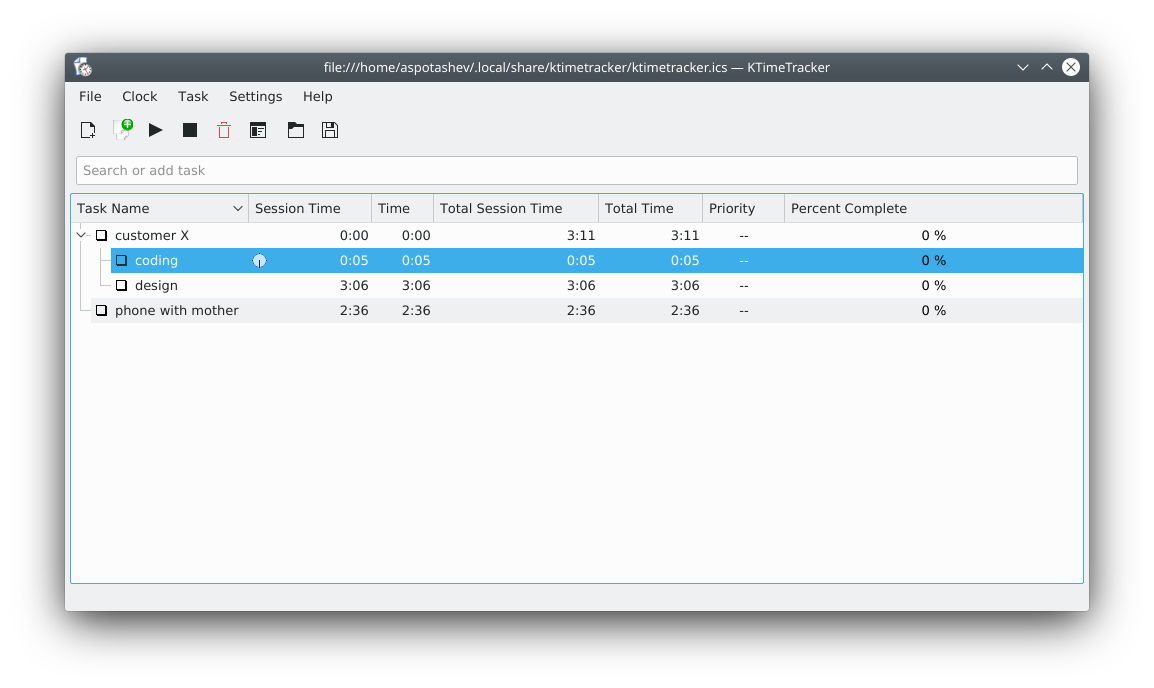
KTimeTracker The new version is also polished and slightly modernised with the most
noticeable new features being the new Task Time Editing dialog and
live preview in the Export dialog as seen in the picture below.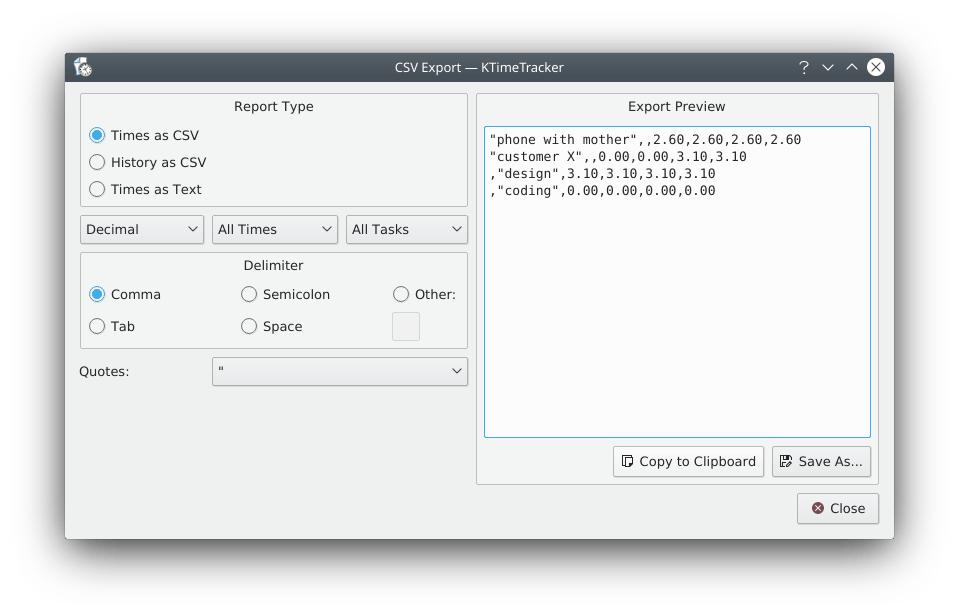
Export dialog in KTimeTracker https://download.kde.org/stable/ktimetracker/5.0.1/src/
It is available through your Linux distro or as a Windows installer and there’s even untested MacOS builds built nightly.The release is announced in the blog of the maintainer Alexander Potashev
KStars 3.3.9
Astronomy program KStars got new features in 3.3.9.
Images can have fine changes in Shadows, Midtones, and Highlights allowing the faintest of stars to be seen.
Alternative constellations from the Western Sky Culture which is fascinating to read about.
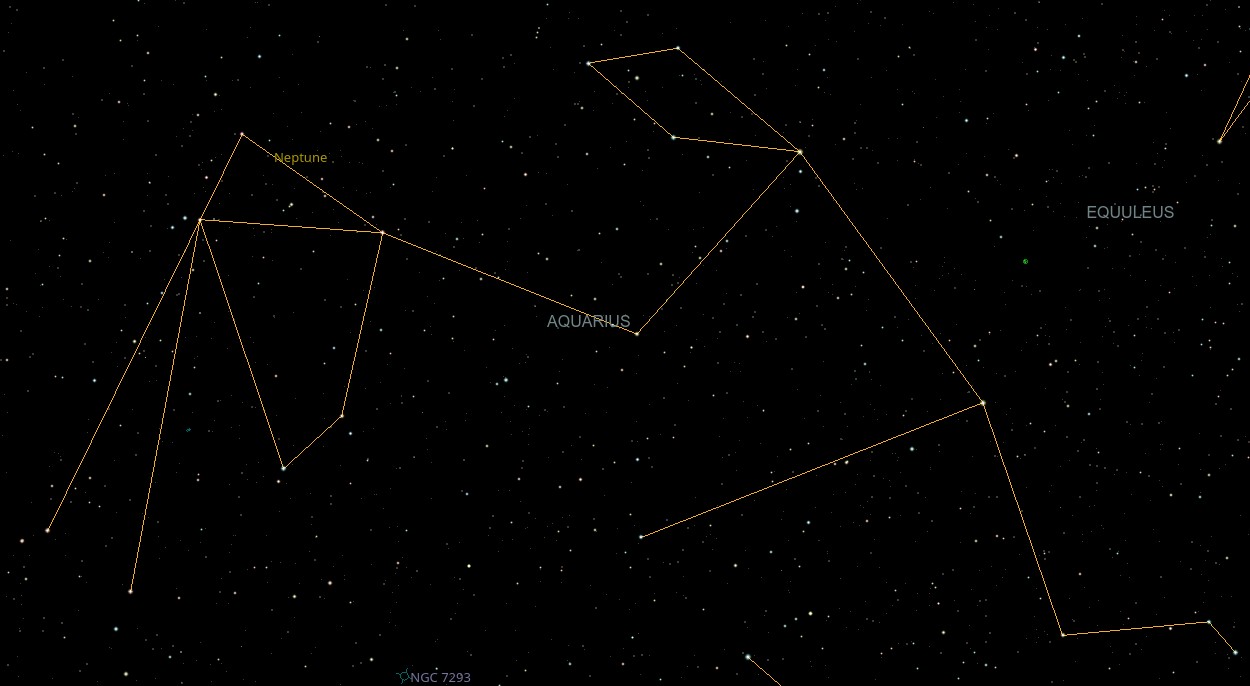
KStars is available for Android, Windows, MacOS, Snap store and from your Linux distro.
Common Frameworks - KNewStuff
Here on the Apps Update we focus on the apps rather than coding libraries. But new features in the common libraries will mean new features in all your apps :)
This month saw a redesigned UI for KNewStuff, the framework to download addons for your applications. The browse and download dialog was redesigned and the comments section can now be filtered. It’ll be appearing in all your apps and settings modules shortly starting with the Global Theme module in System Settings.
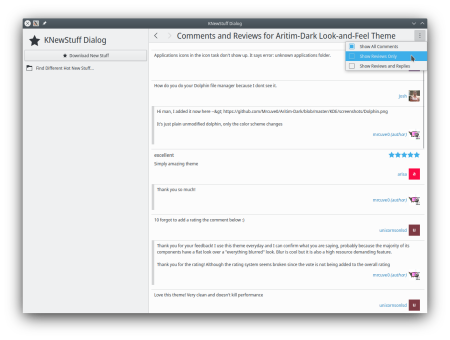
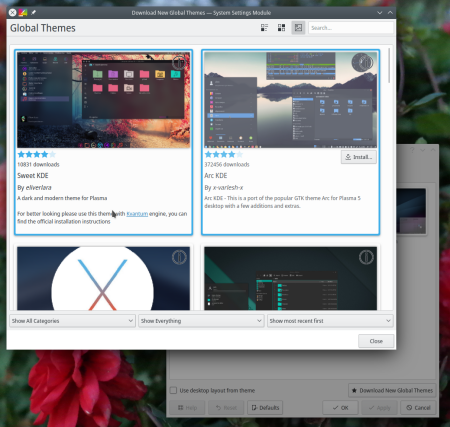
Bugfixes
KDevelop’s monthly bugfix update 5.4.6 fixed a longstanding problem where the GPL and LGPL headers were mixed up, grab it from your distro or Appimage to make sure your licencing is correct.
Latte Dock 0.9.7 fixed some features with Qt 5.14 and removed some crashes.
Dolphin Plugins 19.12.1 fixed a broken SVN Commit dialog.
There was improved file indexing in Elisa. It also fixed some compilation issues on Android and without Baloo.
The new release of KPat was declaired to have no OARS relevant age restrictions.
Okular fixed a crash when closing the print preview dialog.
This month’s release of Kdenlive video editor had an impressive number of fixes best of all was updating the screenshots used in the meta info. It also has dozens of improvements and fixes in timeline and preview handling.
New JavaScript support is now in Kate’s LSP client.
Enjoy KDE on the Flathub Store
KDE is embracing all the app stores. We can now deliver more and more of our programs directly to you the user. One of the leading app stores on Linux is Flathub which uses the FlatPak format.
You may well already have Flatpak and Flathub configured on your system and ready to use in Discover or other app installers. For example KDE neon has set it up by default on installs for over a year now. If not it’s a quick setup process for all the major distros.
If you’re interested in the techy details you can browse KDE’s Flatpak packaging repo and read the KDE Flatpak guide.
But probably what you’re interested in is the apps so take a look at what the Flathub store has under KDE.
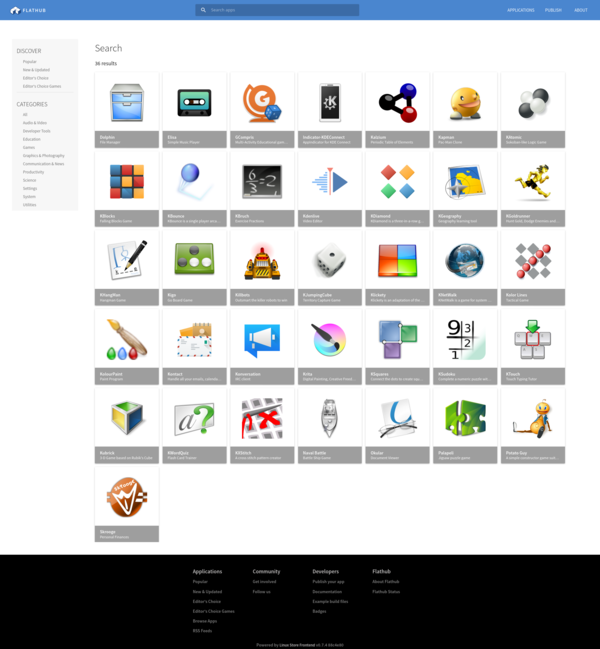
LabPlot now on Chocolatey
Chocolatey is a package manager for Windows. If you want full control over what software is installed on your Windows machine or whole office of machines then Chocolatey gives you easy control over that just like you are used to on Linux.
LabPlot is KDE’s app for interactive graphing and analysis of scientific data and it is now available through Chocolatey. Give it a try!
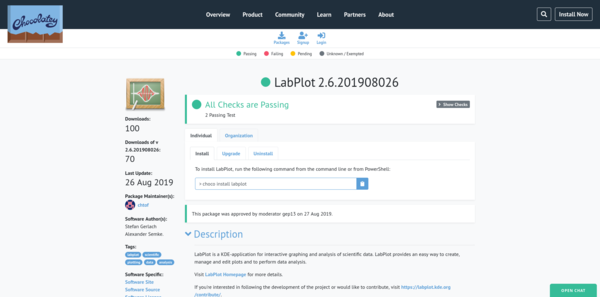
Website Updates
The recently revived KDE Web Team has been updating a bunch of our older themed sites. The newly relaunched KPhotoAlbum website is a lovely example, updated and refreshed for our photo storage and search app.
And if you want to show off a simple to use but full featured local music player but were ashamed by the old looking website, JuK has just had an updated website too.
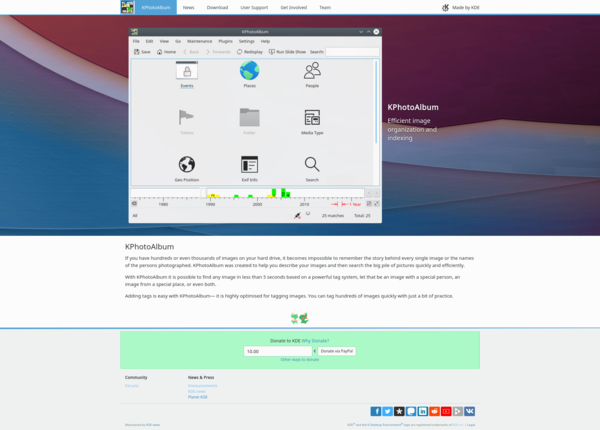
Releases 19.12.1
Some of our projects release on their own timescale and some get released en-masse. The 19.12.1 bundle of projects was released today and should be available through app stores and distros soon. See the 19.12.1 releases page. This bundle was previously called KDE Applications but has been de-branded to become a release service to avoid confusion with all the other applications by KDE and because it is dozens of different products rather than a single whole.
-
ATK, GTK, and Plans for 2020
(GNOME)
The GNOME Project is built by a vibrant community and supported by the GNOME Foundation, a 501(c)(3) non-profit charity registered in California (USA). The GNOME community has spent more than 20 years creating a desktop environment designed for the user. We‘re asking you to become Friend of GNOME, with a recommended donation of $25/month ($5/month […]
-
Apps Update for December
(KDE)

Creating new applications is the easy part. Maintaining them, making them safer and faster and adding features that make them more useful to users is what marks the difference between one-shot wonders and solid tools you can trust and enjoy for years. That is why KDE developers are constantly renewing and updating their applications, making them more reliable, more useful, and in general, just better.
What follows is just a minor sample of what you can expect from the latest round of updates for applications made by the KDE community over the last month:
Calligra Plan is Back
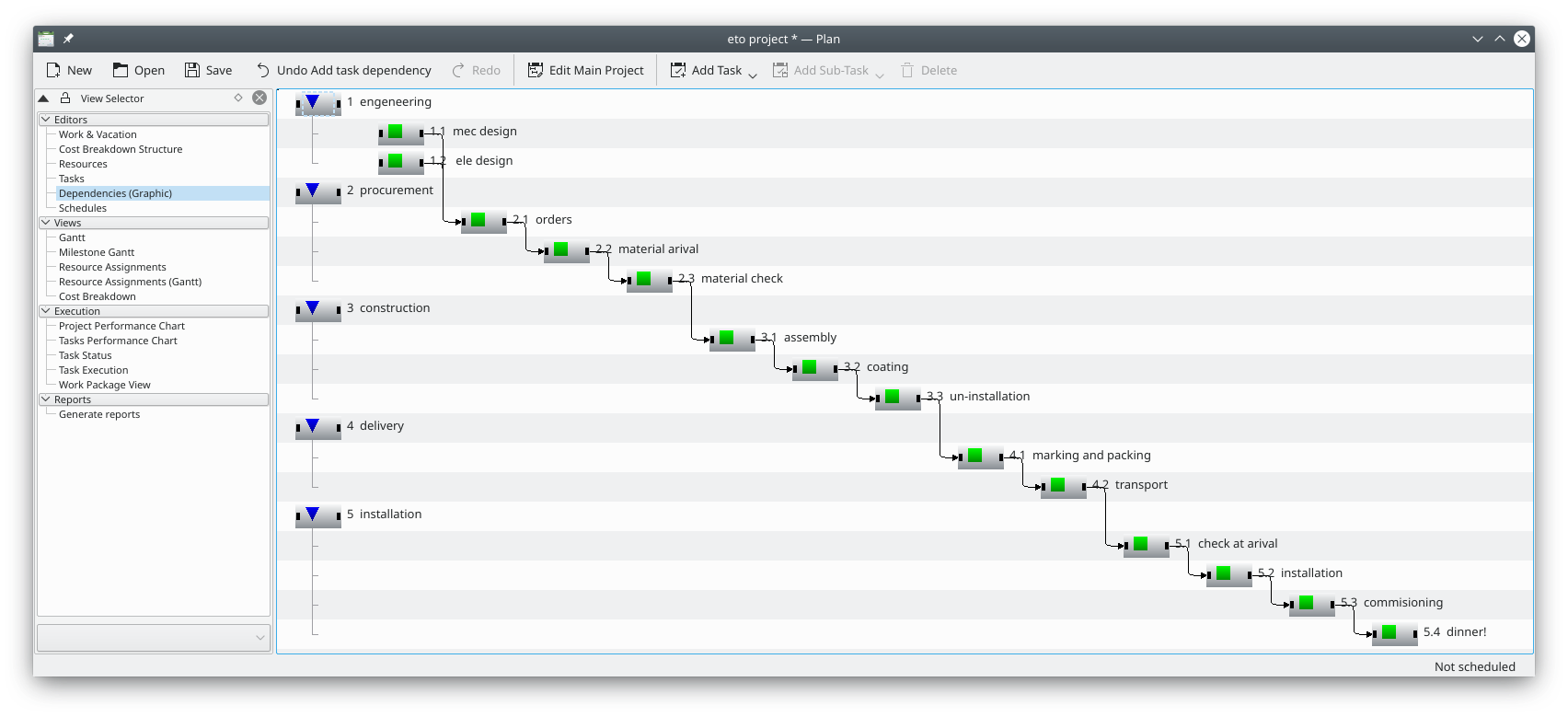
Calligra Plan lets you plan your projects in detail. Calligra Plan, KDE's project planning and management tool, gets its first big update in two years.
In case you were not aware, Plan helps you manage small and large projects which require multiple resources. In order for you to model your project, Plan offers different types of task dependencies and timing constraints. You can define your tasks, estimate the effort needed to perform each, allocate resources and then schedule the project according to your needs and the actual resources available.
One of Plan's strengths is its excellent support for Gantt charts. Gantt charts help you plan, coordinate, and track specific tasks in a project. Using Gantt charts in Plan you will be able to better monitor your project's workflow.
Kdenlive Pumps up the Volume

Kdenlive rocking a brand new audio mixer. Kdenlive developers have been adding new features and squashing bugs like crazy -- the latest version alone comes with more than 200 changes.
A lot of work has gone into improving support for audio. In the "bugs solved", department they have gotten rid of an error that would eat up memory. They have also made saving audio thumbnails much more efficient.
But the most exciting new feature is that Kdenlive now comes with a spectacular sound mixer (see image). Developers have also added a new audio clip display in the clip monitor and the project bin so you can better synchronize your moving images with the soundtrack.
Für Elisa
Talking of sound, Elisa is one of KDE's most popular up-and-coming music players. Elisa belongs to the deceptively simple, very light, very good-looking variety of players, with an intuitive and elegant interface and, in its latest version, Elisa has upgraded its looks even further to adapt better to High DPI screens. It also now integrates better with the looks other KDE applications.
Indexing music files has also improved and Elisa now supports web radios and comes with a few examples for you to try.
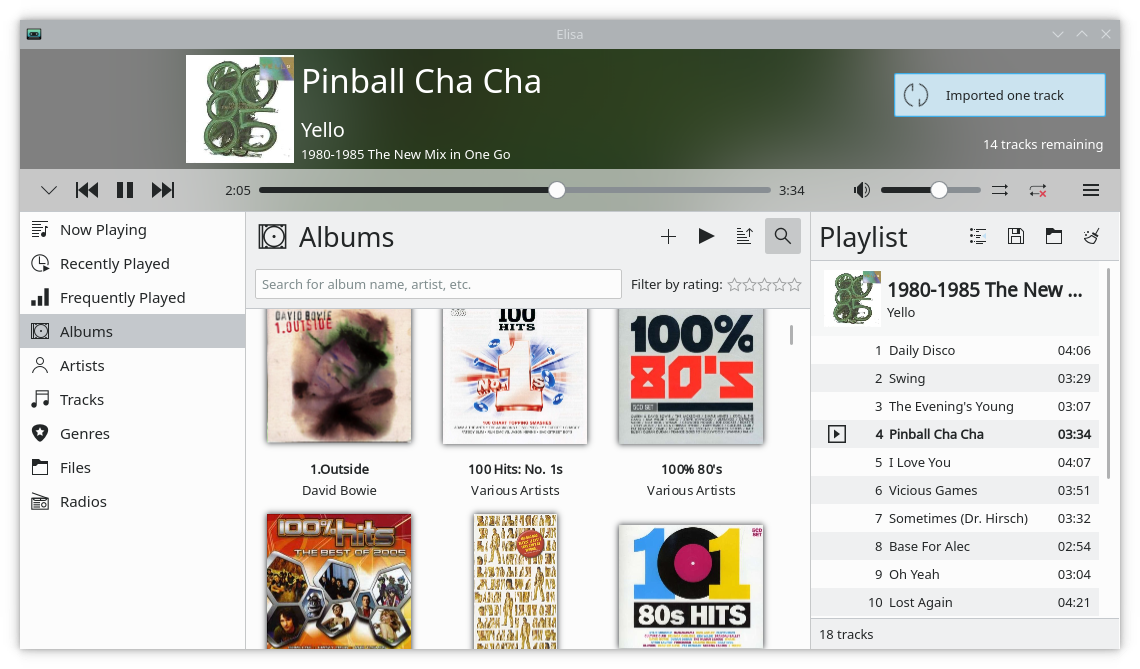
The Elisa music player.KDE Connect: Let Your Phone Rule your Desktop
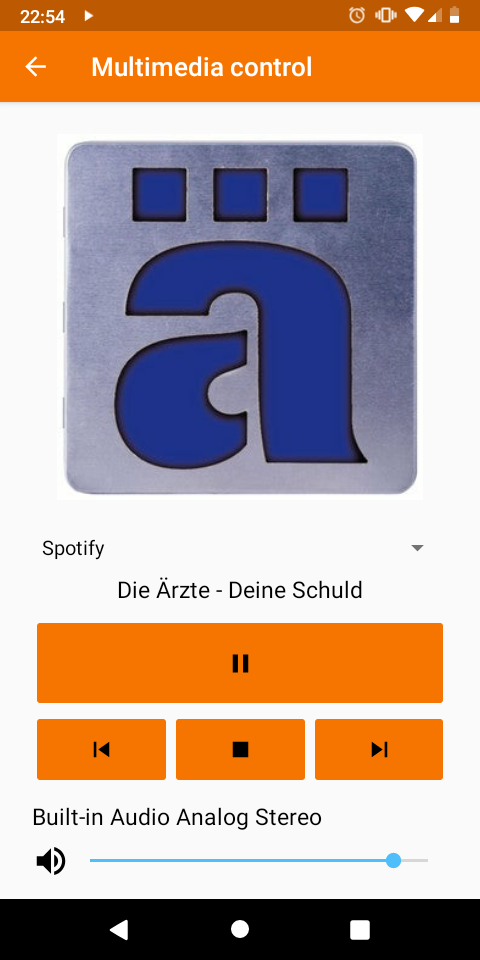
KDE Connect now lets you control
the global volume of your system.Most people who get to know KDE Connect, end up raving about it just because of how darned useful it is.
The latest version of KDE Connect packs even more features. One of the more noticeable is that there is a new SMS app that lets you read and write SMS from your computer with the full conversation history.
Developers are also adding new functionalities to existing features to make them even more useful. For example, you could already use KDE Connect to control the volume of media playing on your desktop, say, in VLC. But now you can use KDE Connect to also control your system's global volume from your phone. When giving a talk, you can control your presentation using KDE Connect to flip forward and back through your slides, and apart from integrating with other KDE apps, you can now also send files from Thunar (Xfce's file manager) and Elementary applications such as Pantheon Files.
Talking of other platforms, you can now run the mobile component of KDE Connect not only on Android, but also on all those mobile Linux platforms we'll be seeing in upcoming devices like the PinePhone and the Librem 5. The new version also provides features for desktop-to-desktop users, such as media control across desktops, remote input, device ringing, file transfers and running commands.
And Much More
But that is not all by any means: Dolphin, Spectacle, Okular and dozens of other applications have included new features you are sure to find useful. Even more projects, broaching apps, libraries and frameworks, have tweaked their code making them more stable and secure.
If you want to get an idea of the full range of changes, visit the official release announcement, or check out the changelog for every single detail of what has changed.
Getting applications made by KDE is also now easier: most are now available as Flatpaks, Snaps and AppImages. You just have to download them and they run straight out of the box. Many programs are also available for more platforms, such as Android, macOs and Windows. Krita and Okular have been available in the Microsoft Store for some time now, and they have recently been joined by Kile, a user-friendly LaTeX document editor.
Distributions will be updating their own repos and making the new versions available to Linux users over the next few weeks. Look out for your updates!
-
Translation Workshop in Indonesia this Weekend
(KDE)

The KDE Indonesia Community will once again hold a Kopdar (local term for BoF). This meeting is the second meeting after the successful meeting in 2018. The activity will be held this weekend with talks and activities about translating KDE software into Indonesian. The main event is for KDE fans in particular and Linux in general to collaborate in KDE translation.
The event will be held on:
Day: Saturday, 23 November 2019
Time: 19.00 (UTC + 7)
Venue: Midtrans Office Jl. Gandok Baru No.46, Sleman, Yogyakarta
Speaker: Wantoyek
Topic: The First Step to Becoming a KDE TranslatorThe purpose of this event is to invite KDE activists to participate in contributing to the community, especially as translators. The KDE Indonesia community also opens opportunities to donate activities for anyone who wants to support this activity, please contact Rifky Affand (rifki.affandi3@gmail.com). See you in DIY Yogyakarta, KDE lovers!
To register go to the registration form and join the KDE Indonesia Telegram channel.
-
Libre Graphics Meeting Call for Proposals
(KDE)
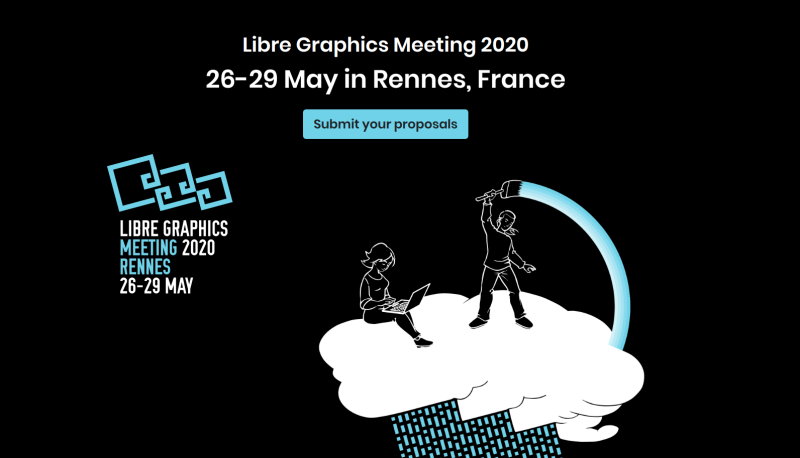
Update: sorry, the call for proposals is not yet ready, they are working on some technical fixes so please do not fill in the form yet. Watch out on social media for when it is ready.
The Libre Graphics Meeting (LGM) is the annual international convention for the discussion and development of free and open source graphics software.
This year it will happen in Rennes, France, from May 26th to 29th. We are welcoming all relevant projects to submit a proposal for a talk and/or a workshop. We already expect Krita and Kdenlive teams to be present. The Krita sprint will be held after the meeting and Kdenlive are planning to have a sprint around that time too. It would be awesome to also see some people from Plasma team working on graphics tablet support and color management, or any other topic of interest for developers and users of graphics creation application.
LGM are now asking for talks, workshops, BoF meetings and lightning talks for the conference. Please don't be shy and submit your proposal.
KDE e.V. has agreed to support the event by providing travel support to KDE contributors. If you are interested, make sure to file your reimbursement request before January 31st.
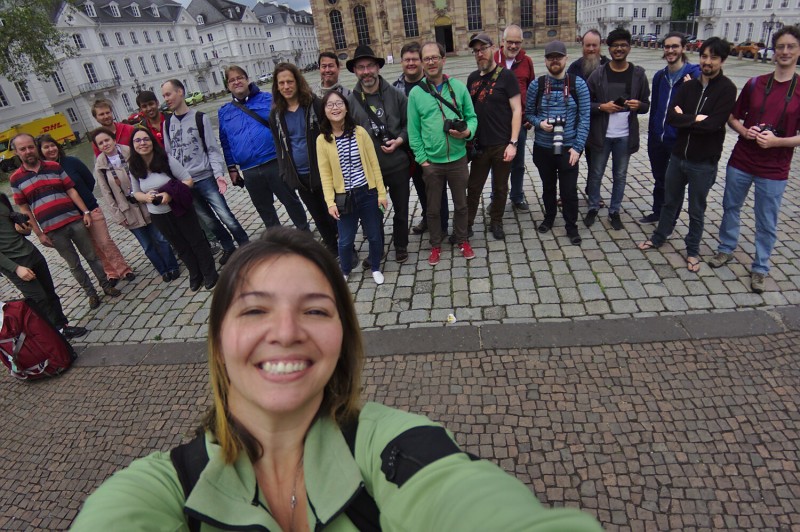
LGM 2019
-
GNOME acknowledge AWS Sponsorship
(GNOME)
The GNOME Foundation wants to recognize AWS for donating credits that have allowed us (GNOME) to taking advantage of the multitude of services Amazon provides. In particular, the GNOME Infrastructure utilizes AWS S3 service as a file store for the multitude of Docker images that are generated or updated daily. GNOME uses GitLab as its […]
-
Akademy 2017 ‒ Call for Hosts
(KDE)

Akademy, KDE's annual conference, requires a place and team for the year 2017. That's why we are looking for a vibrant, enthusiatic spot in Europe that can host us!
A bit about Akademy
Akademy is KDE's annual get-together where our creativity, productivity and love are at their peak. Developers, users, translators, students, artists, writers - pretty much anyone who has been involved with KDE will join Akademy to participate and learn. Contents will range from keynote speeches and a two-day dual track session of talks by the FOSS community, to workshops and Birds of a Feather (BoF) sessions where we plot the future of the project.
Friday is scheduled for the KDE e.V. General Assembly and a pre-Akademy party/welcoming event. Saturday and Sunday covers the keynotes, talks and lightning talks. The remaining four days are used for BoFs, intensive coding sessions and workshops for smaller groups of 10 to 30 people out of which one day is reserved for a Day Trip of the attendees around the local touristic sights.
Hosting Akademy is a great way to contribute to a movement of global collaboration. You get a chance to host one of the largest FOSS community in the world with contributors from over the world and be a witness to a wonderful inter-cultural fusion of attendees in your home town. You'll also get great exposure to Free Software. It is a great opportunity for the local university students, professors, technology enthusiasts and professionals to try their hand at something new.
What You Need to Do
Akademy requires a location in Europe, with a nice conference venue, that is easy to reach, preferably close to an international airport.
Organizing Akademy is a demanding and a resource intensive task but you’ll be guided along the entire process by people who’ve been doing this since years. Nevertheless, the local team should be prepared to spare a considerable amount of time for this.
For detailed information, please see the Call for Hosts. Questions and applications should be addressed to the Board of KDE e.V. or the Akademy Team. Please indicate your interest in hosting Akademy to the Board of KDE e.V. by December 15th. Full applications will be accepted until 15th January. We look forward to your enthusiasm in being the next host for Akademy 2017!
-
Wednesday Akademy BoF wrapup
(KDE)
Wednesday is the third and for many people last day of BoFs, as people start to head off home. However hacking and some smaller meetings will happen tomorrow between those still here
Dot Categories:
-
Plasma: A Safe Haven for Windows 7 Refugees
(KDE)
Microsoft will stop providing updates for Windows 7 on January 14 2020.
There won't be any more patches that correct bugs or even dangerous vulnerabilities. This will leave Windows 7 users exposed to all sorts of bad stuff. But that is not a huge concern for Microsoft. With this move, Redmond hopes to encourage users to upgrade to Windows 10.
But why should we care? Maybe because Windows currently holds 77% of the global desktop market share (all Linux desktops combined hold less than 2%). Of that 77%, nearly 30% belongs to Windows 7. That is nearly a billion people still holding on to Windows 7 because they are resisting the move to Windows 10. Apart from the natural human resistance to change, Windows 10 has earned a bad rap as an operating system that will gladly leak your data back to Microsoft and lace your desktop with intrusive advertisements as a matter of course.
Helping people regain control over their systems and protecting their data is precisely what Free Software communities do best, making this the perfect opportunity to help Windows 7 users upgrade to something much better: To the Plasma desktop!
How you can help
We need you to help convince Windows 7 users to move to the Plasma desktop. We have set up a task where we are brainstorming ideas, advice and resources. You can contribute your thoughts too. Get your KDE Identity today and join the conversation.
You can also join the Promo team live on Matrix and help us run this campaign.
Or fly solo! Talk to your friends, family, classmates and colleagues. Even if you convince just one person to make the transition to any Linux-based system, you will have done something valuable and helped the FLOSS movement.
The Windows 7-like theme shown above was put together (from many parts created by many generous contributors) by Dominic Hayes, creator of Feren OS, a cool-looking Ubuntu-based Linux distro aimed squarely at end users. Check it out!
Dominic used the following elements to re-create the look and feel of the desktop:
Plasma Theme: Seven Black
Window Decorations: Seven Black
Application Style: gtk2
GTK Theme: Windows Se7en by Elbullazul
Icons: Darkine
Colours: Breeze Light
Cursors: DMZ White
Splash Screen: Feren OS
Panel: 38 height
Widgets: Default Apps Menu, I-O Task Manager, Stock System Tray, Feren Calendar or Event Calendar, Win7 Show Desktop -
Plasma 5.10 Beta, Slicker Desktop
(KDE)
Also available in:
English | Català | Nederlands | Svenska | Українська
Monday, 15 May 2017. Today KDE has made a testing release of our desktop Plasma 5.10 with new features across the suite to give users an experience which lives up to our tagline: simple by default, powerful when needed.
Panel Task Manager
Task Manager, the list of applications in the panel, has gained options for middle mouse click such as grouping and ungrouping applications.
Several other improvements here include:
- Places jump list actions in File manager launchers (e.g. pinned Dolphin in Task Manager now lists user places)
- The icon size in vertical Task Managers is now configurable to support more common vertical panel usage patterns
- Improved app identification and pinning in Task Manager for apps that rely on StartupWMClass, perl-SDL-based apps and more
Folder View Is the New Default Desktop

Folder on the Desktop by Default After some years shunning icons on the desktop we have accepted the inevitable and changed to Folder View as the default desktop which brings some icons by default and allows users to put whatever files or folders they want easy access to. Many other improvements have been made to the Folder View include:
- Spring Loading in Folder View making drag and drop of files powerful and quick
- More space-saving/tighter icon grid in Folder View based on much user feedback
- Improved mouse behavior / ergonomics in Folder View for icon dnd (less surprising drop/insert location), rectangle selection (easier, less fiddly) and hover (same)
- Revamped rename user interface in Folder View (better keyboard and mouse behavior e.g. closing the editor by clicking outside, RTL fixed, etc.)
- Massively improved performance in Folder View for initial listing and scrolling large folders, reduced memory usage
- Many other bug fixes and UI improvements in Folder View, e.g. better back button history, Undo shortcut support, clickable location in the headings, etc.
- Unified drop menu in Folder View, showing both file (Copy/Move/Link) and widget (creating a Picture widget from an image drop, etc.) drop actions
- It is now possible to resize widgets in the desktop by dragging on their edges and moving them with Alt+left-click, just like regular windows
New Features Everywhere

Lock Screen Now Has Music Controls 
Software Centre Plasma Search offers to install apps There are so many other improvements throughout the desktop, here's a sample:
- Media controls on lock screen
- Pause music on suspend
- Software Centre Plasma Search (KRunner) suggests to install non-installed apps
- File copying notifications have a context menu on previews giving access to actions such as open containing folder, copy, open with etc
- Improved plasma-windowed (enforces applet default/minimum sizes etc)
- 'desktop edit mode', when opening toolbox reveals applet handles
- Performance optimizations in Pager and Task Manager
- 'Often used' docs and apps in app launchers in addition to 'Recently used'
- Panel icons (buttons for popup applets, launcher applets) now follow the Icons -> Advanced -> Panel size setting in System Settings again, so they won't take up too much space, particularly useful for wide vertical panels
- Revamped password dialogs for network authentication
- The security of the lock screen architecture got reworked and simplified to ensure that your system is secured when the screen is locked. On Linux systems the lock screen is put into a sandbox through the seccomp technology.
- Plasma's window manager support for hung processes got improved. When a window is not responding any more it gets darkened to indicate that one cannot interact with it any more.
- Support for locking and unlocking the shell from the startup script, useful especially for distributions and enterprise setups
- Audio Volume applet has a handy menu on each device which you can use to set is as default or switch output to headphones.
Improved touch screen support

Virtual keyboard on Log In and Lock Screen
Touch Screen Support has improved in several ways:- Virtual Keyboard in lock screen
- Virtual Keyboard in the login screen
- Touch screen edge swipe gestures
- Left screen edge defaults to window switching
- Show auto-hiding panels through edge swipe gesture
Working for the Future with Wayland
We have put a lot of work into porting to new graphics layer Wayland, the switch is coming but we won't recommend it until it is completely transparent to the user. There will be improved features too such as KWin now supports scaling displays by different levels if you have a HiDPI monitor and a normal DPI screen.
Keyboard layout support in Wayland now has all the features of X11:
- Layout switcher in the system tray
- Per layout global shortcut
- Switch layout based on a policy, either global, virtual desktop, application or per window
- IPC interface added, so that other applications can change layout.
Plymouth Boot Splash Selection
A new System Settings module lets you download and select boot time splashes.
Bundle Packages

Flatpak integration with xdg-desktop-portal-kde: selecting a file using file chooser portal, invoking openURI portal and notification portal Experimentla support for forthcoming new bundle package formats has been implemented. Discover software centre has gained provisional backends for Flatpak and Snappy. New plugin xdg-desktop-portal-kde has added KDE integration into Flatpak packaged applications.
Support for GNOME’s Open Desktop Ratings, replacing old Ubuntu popularity contest with tons of already existing reviews and comments.
-
Keeping the (server) lights on
(GNOME)
The GNOME project is built by a vibrant community and supported by the GNOME Foundation, a 501(c)(3) nonprofit charity registered in California (USA). The GNOME community has spent more than 20 years creating a free desktop environment designed for the user. We‘re asking you to join us by becoming Friend of GNOME. The GNOME Foundation […]
-
Akademy 2019 Wednesday and Thursday BoF Wrapup
(KDE)
Wednesday continued the Akademy BoFs, group sessions and hacking in the morning followed by the daytrip in the afternoon to Lake Como, to have some fun, get away from laptops and get to know each other better. Thursday was back to BoFs, meetings and hacking culminating in a wrapup session at the end covering the last two days so that what happened in the different rooms can be shared with everyone including those not present.
Watch Thursday's wrapup session in the video below
Dot Categories:
-
Linux Application Summit 2019 about to start in Barcelona
(GNOME)
The GNOME Foundation is very excited that Linux Application Summit 2019 is about to start in Barcelona, Spain. Linux App Summit 2019 (or LAS) is a joint collaboration between GNOME and KDE which will feature 3 days of talks from prominent members of the Linux developer community from Tuesday 12th November to Thursday 14th November, […]
-
Randa Roundup - Part II
(KDE)
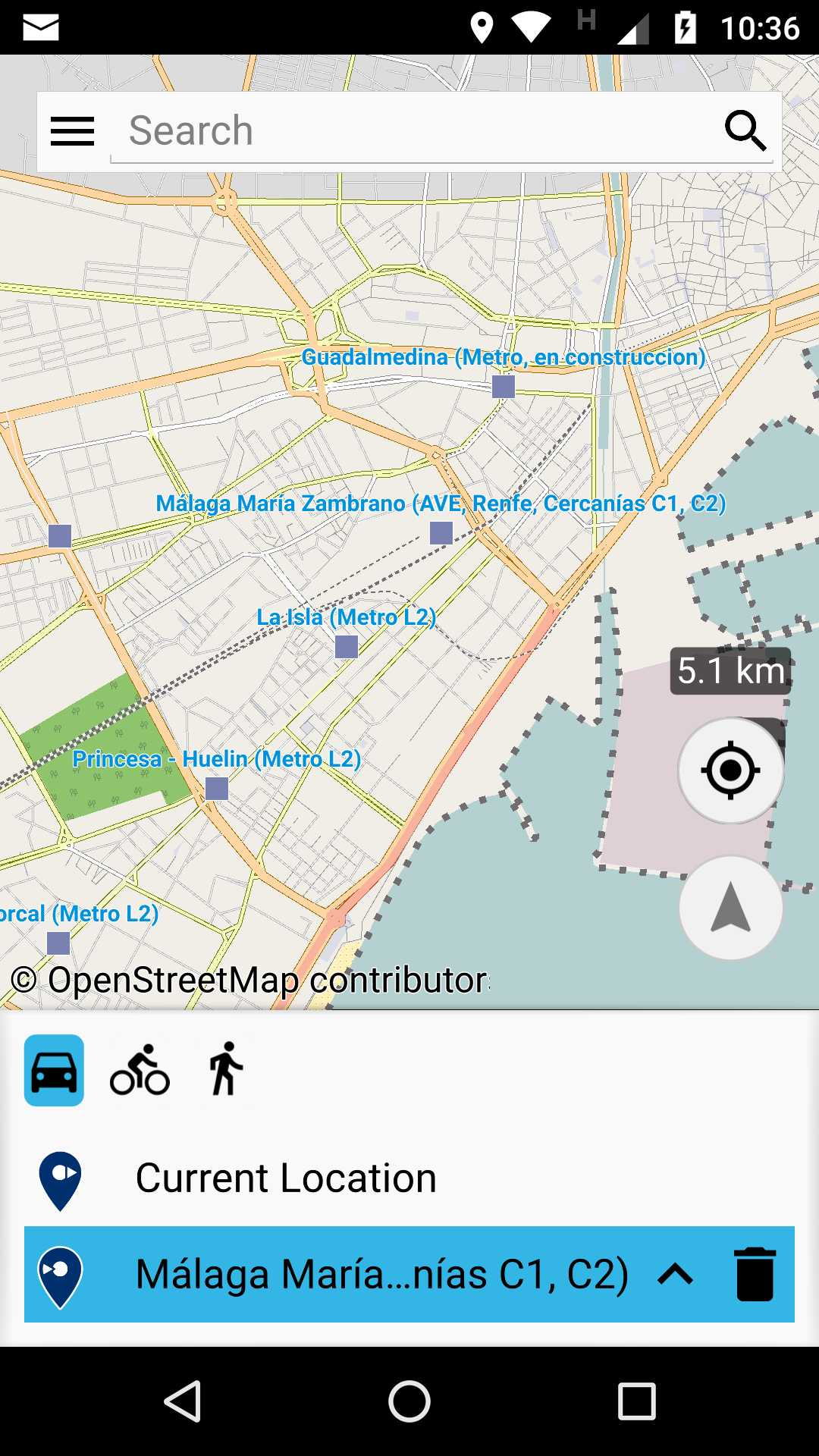
Marble, KDE's mapping app, will get
better turn-by-turn navigation features.The last time we wrote about Randa Meetings 2017, preparations for the event were still in progress. The developer sprint is now in full swing. Everyone is settled in and ready to start improving, debugging and adding features to KDE's apps and frameworks. But what exactly will the developers work on during Randa 2017? Here are some more details.
As you're probably already aware, the theme of Randa Meetings 2017 is accessibility. This doesn't include only desktop software, but also extends to mobile apps. Sanjiban Bairagya is working on the Marble Maps Android app, KDE's answer to Google Earth. His accessibility-related tasks include making the turn-by-turn navigation experience more visually intuitive in real-time. He will also be switching Marble to the Qt 5.8 Speech module instead of using Java for text-to-speech support in navigation. Another thing Sanjiban wants to do is find a way to let users add notes to any place on the map.
Bhushan Shah will mostly focus on Plasma in all its shapes and sizes. During Randa 2017, he will work on making Plasma even better and snappier with Wayland, as well as on making PIM apps work better on Plasma Mobile.
Plenty of new things are in store for digiKam. Simon Frei will work on improving the user interface, as well as the way digiKam handles metadata. Gilles Caulier will be busy with digiKam documentation and tools for exporting images to web services.
Dan Vratil will be busy with KDE PIM and Akonadi. He plans to discuss accessibility in Kontact with other KDE PIM developers, and complete the process of porting all PIM code away from KDE4.
You Can Be Part of Randa 2017, Too

digiKam will have several developers working on it all at the
same time.KDE software is developed every day by people from all around the world. For some of them, Randa Meetings are a unique, rare opportunity to finally meet other KDE developers in person. After many months, or sometimes even years, of communicating exclusively via email and IRC, the developers can sit down and work together on resolving the most pressing issues. Apart from writing code, they also discuss long-term goals and decide on the future of KDE projects.
Even if you're not a developer, you can also participate in Randa Meetings 2017 by donating to our fundraiser. Donations are used to cover accommodation and travel costs, and to make sure the developers are not hungry and thirsty during the sprint. This is your chance to support Free and open source software, and to directly contribute to the KDE Community.
Don't miss out!
-
Akademy 2019 Talks Videos
(KDE)
We now have the Akademy 2019 videos ready for you to enjoy, see the previous summary of talks on the dot for some inspiration on what to watch. The talk schedule has the full list
We had keynotes on Developers Italia and the New Guidelines: Let the Open Source Revolution Start! by Leonardo Favario and Towards Qt 6 by Lars Knoll
We also got updates on KDE Community's goals
Another thing to check out are the previously announced BoF wrapups letting you know what went on during the week following the talks
Recommendations
Here are some talks recommended by attendees:
What we do in the Promos
Piyush: i attended Paul's talk. It was really nice to have an insight on promo's day to day tasks and challenges!
Strengthen Code Review Culture: rm -rf ‘Toxic Behaviors’
Philip: I liked the code review one
Valorie: and I agree, Aniketh's Code Review talk was excellent
Software Distribution: lightning talks & discussion
Jon: Software Distribution talk! (although I prefer my original name for it of Getting KDE Software to Users)
Taking KDE to the skies: Making the drone ground control Kirogi
Ivana: I nominate Eike's talk about Kirogi. It was such a cool talk that told the story of developing an app in a way that even non-devs could understand, and I think it really showcased how KDE is still going strong and taking the lead in the innovation game
Hannah: The talk was horrible.... It made me want to buy a drone
Mycroft on Plasma Automobile Demo
Bhushan: Automative demo one
About Akademy
For most of the year, KDE - one of the largest free and open software communities in the world - works online by email, IRC, forums and mailing lists. Akademy provides all KDE contributors the opportunity to meet in person to foster social bonds, work on concrete technology issues, consider new ideas, and reinforce the innovative, dynamic culture of KDE. Akademy brings together artists, designers, developers, translators, users, writers, sponsors and many other types of KDE contributors to celebrate the achievements of the past year and help determine the direction for the next year. Hands-on sessions offer the opportunity for intense work bringing those plans to reality. The KDE community welcomes companies building on KDE technology, and those that are looking for opportunities. For more information, please contact the Akademy Team.
Dot Categories:
-
KDE is All About the Apps: October Update
(KDE)
KDE is all about the Apps!
We are a community of thousands of contributors who make hundreds of Apps using collaborative open source methods. Our apps run on Linux with Plasma, of course, but also fit in well with GNOME, Enlightenment, XFCE, or any other desktop you happen to be using. Many of our apps run on Windows, Android and macOS.
A new goal for the KDE community is to push how we are All About the Apps. We will be highlighting our best software and promoting it to increase its adoption outside the circle of current KDE fans (who we still love very much!). This is a monthly update of what's new in our apps. If you'd like to help out with this community goal, take a look at the All About the Apps workboard, and join us in our Matrix chat channel.
App Updates
The elite painting app Krita received a monthly bugfix release, 4.2.7. The developers have improved the layout and functionality of the color selection dialog, and made it possible to save group layers to file layers even if they are empty. The sort order of images imported as frames was fixed, a bunch of crashes removed, and dozens of other bugs tidied up.
To celebrate, the Krita team also made a video with artist Ramon Miranda that offers some advice for improving your sketches. Krita is available in your favorite Linux distribution, for Windows, macOS, as a Linux AppImage, on Flathub, and in the Snap store.
KMyMoney, the app for managing your finances, also got a new release - 5.0.7. This release introduces updates required for the new regulations of the Payment Services Directive, which affects the online capabilities for German bank users.
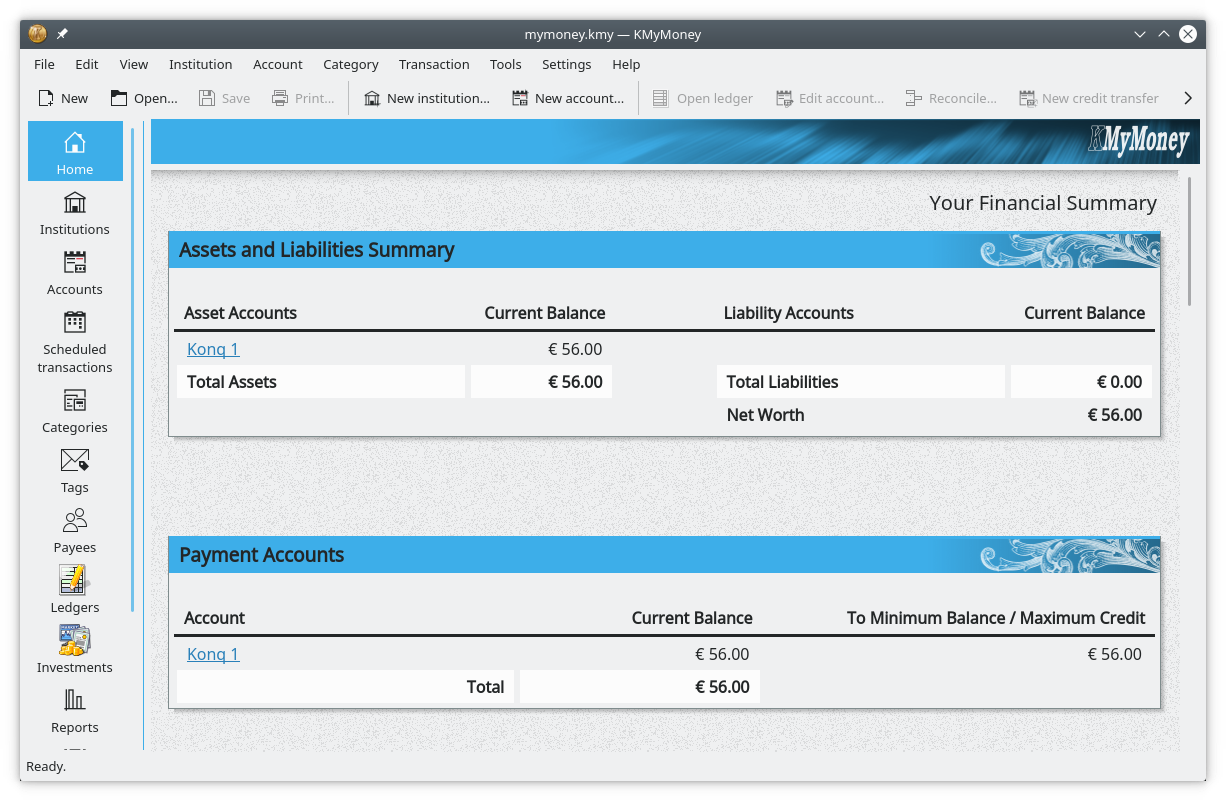
To make KMyMoney compatible with those regulations (especially the strong customer authentication part), developers had to adapt it to updated APIs of the Gwenhywfar and AqBanking libraries which provide the banking protocol implementations.
Coming from KDE and used by many of us, the distributed compiler cluster Icecream and Icecream Monitor have been updated. The new release improves Objective C and C++ support, removes hardcoded compiler paths, and fixes job preloading to again allow sending one extra job to a fully busy node. In the monitor app several new ice cream flavors have also been added, we're not quite sure what this means but it sounds delicious.
In the last month, Latte Dock (panel for the Plasma desktop) had two new releases, making improvements to its new Win Indicator look.
KDevelop, the discerning coder's IDE, published a bugfix release - 5.4.2. You can get it from your Linux distribution or as an AppImage, and you can also compile versions for Windows and macOS.
RSIBreak, the app that helps you prevent damage to your wrists got a new release versioned 0.12.11.

Photo management and editing app digiKam released the version 6.3. The highlight of the new release is the G'Mic plugin.
G'Mic is the image processing library with over 950 different filters, so you can make all your photos truly beautiful. digiKam can be installed from your Linux distro, AppImage bundles, macOS package, and Windows 32/64-bit installers.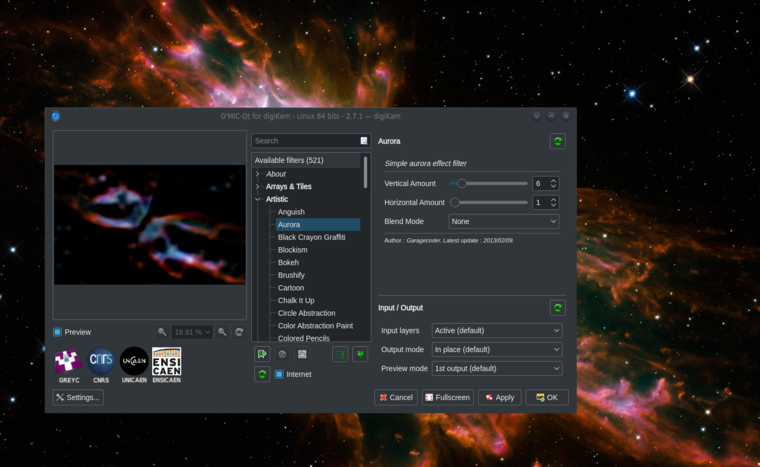
Telescope and astronomy app KStars also had a new release, versioned 3.3.6. The KStars Live Video window can now show debayer frames in real-time, making it possible to create color video streams.

The weather data can be directly displayed in the Observatory Module, and the user interface has been improved in a number of ways. As one of the most feature-rich free astronomy apps, KStars caters to a wide variety of use cases, so you will surely find tools that are useful to you regardless of your level of experience. KStars is available pretty much everywhere - as a Windows installer, macOS installer, Android app, Snap package, and in your Linux distribution.
Bug Fixes
We are continually improving our apps, so plenty of bug fixes have been made. Here are some highlights.
- Our document viewer Okular gained support for HighDPI screens. This one-line fix to add automatic scaling based on the pixel density of the monitor will make viewing documents on fancy monitors so much better.
- The advanced text editor Kate was similarly updated to work with HiDPI screens throughout.
- The chess game Knights had a one-line fix in version 19.08.2. Thanks to the fix, you can now start a game when the second player is a computer engine again.
- Video editor Kdenlive fixed screengrabs in Linux to eliminate crashes, and in Windows to correctly grab the audio.
- CD burner app K3b fixed a crash where it couldn't find the supporting command-line tool mkisofs.
Supporting Bits
Libraries and artwork support our apps to make our software work beautifully.
The Breeze icon theme got new icons for activities, trash, batteries, QR codes, and more. Libical, which is used by Kontact to talk to iCalendar protocols and data formats, had a bugfix release (3.0.6).
Snorenotify is a notification framework supporting Linux, Windows and macOS. Snoretoast is a command-line application used within Snorenotify for Windows Toast notifications. It is also used in Quassel and Tomahawk, and the good news is that it got a new release this month (0.7.0).
New in App Stores
Our software is increasingly available directly through app stores. To celebrate and highlight this (and to help you find them more easily!), this month we added Windows Store links to the KDE Applications web page.

More KDE applications found their way to the Windows Store:
Welcoming New Projects
New projects are started in the KDE community all the time. When those projects are ready for wider use, they go through a process called "KDE review", where other KDE contributors will check them for code quality, features, licensing, and how well they work on different platforms. Last but not least, we decide whether we are happy to give it the KDE stamp of approval.
In KDE review this month is Ruqola, a chat app which talks on the Rocket Chat network and uses the Kirigami UI framework. For the more technically-inclined, Elf-Inspector is an app providing tools for inspecting, analyzing, and optimizing ELF files (the executable file format used on Linux).
Saying Goodbye
Sometimes, apps are left behind when their code does not keep up with the rest of the world.
This month, a new version of our multimedia library Phonon was released. In this version, we removed Qt4 support - sensible enough, as Qt4 hasn't been supported since 2015. As a result, the music player app Amarok has become deprecated (at least for now). Don't lose hope, though: the Qt5 port is progressing, but it's not there yet.
The web browser Rekonq was marked as unmaintained, meaning it's unlikely to ever come back. However, the work carries on in Falkon, so make sure to check out and support the project if you are interested in lightweight web browsers. Also considered unmaintained is the bootup configuration tool systemd-kcm.
Enjoy your apps from KDE, and stay tuned for more updates!
-
KDE e.V. Community 2016 Report
(KDE)
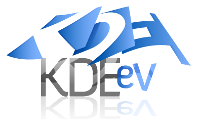
The KDE e.V. community report for 2016 is now available. After the introductory statement from the Board, you can read a featured article about the 20th anniversary of KDE, and an overview of all developer sprints and conferences supported by KDE e.V. The report includes statements from our Working Groups, development highlights for 2016, and some information about the current structure of KDE e.V.
Featured Article – 20 years of KDE
In 2016, all of us celebrated 20 years of the KDE Community with a number of parties around the world. We participated in the awesome QtCon in Berlin, announced the book 20 Years of KDE: Past, Present and Future and the KDE timeline. In this featured article, Lydia Pintscher brings back the early KDE impetus for digital freedom that still remains alive in every contributor's soul.
Supported Activities and Specific Reports
The report provides summaries of eight KDE e.V. supported developer sprints and six trade shows and community events where the KDE Community had its presence. Specific reports from the KDE e.V. Working Groups and KDE España are also presented. Finally, the report contains development highlights for 2016, and a short overview of mentoring programs in which KDE has been involved.
Results
The report concludes with a list of contributors who joined KDE e.V. during 2016, and presents the current members of the KDE e.V. Board of Directors. We invite you to read the entire report!
Dot Categories:
-
GUADEC 2018 to take place in Almería, Spain
(GNOME)
It is with great pleasure that the GNOME Foundation announces this year’s GUADEC to be held in Almería, Spain between July 6 – 11, 2018. The GNOME User and Developer European Conference (GUADEC) brings together hundreds of users and developers every year to further the GNOME Project. It is one of the Foundation’s longest-standing and most […]
-
Plasma 5.17 is out!
(KDE)
KDE launches the new version of its acclaimed desktop environment, Plasma 5.17.
Plasma 5.17 is the version where the desktop anticipates your needs. Among many new features and improvements, your desktop now starts up faster; Night Color, the color-grading system that relaxes your eyes when the sun sets, has landed for X11; your Plasma desktop recognizes when you are giving a presentation, and stops messages popping up in the middle of your slideshows; and, if you are using Wayland, Plasma now comes with fractional scaling, which means that you can adjust the size of all your desktop elements, windows, fonts and panels perfectly to your HiDPI monitor.
The best part? The hundreds of improvements that have made their way into Plasma 5.17 do not tax your hardware! Plasma 5.17 is as lightweight and thrifty with resources as ever.
Check out the official release announcement for more features, improvements and goodies, or browse the full Plasma 5.17 changelog to read about every single change. You can also experience Plasma 5.17 for yourself and install one of the many distributions that offer Plasma.
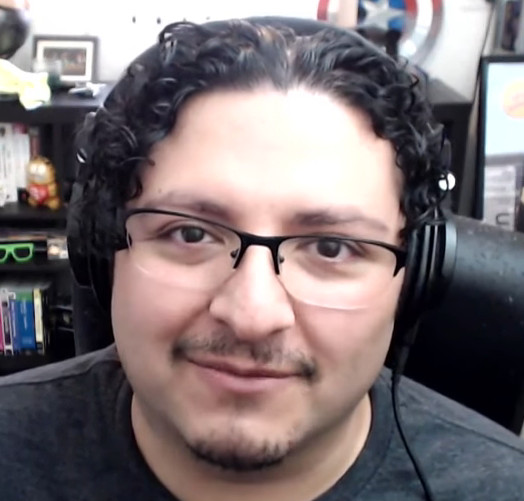
Guillermo Amaral The Plasma 5.17 series is dedicated to our friend Guillermo Amaral. Guillermo was an enthusiastic KDE developer who rightly self-described as 'an incredibly handsome multidisciplinary self-taught engineer'. He brought cheer to family, friends and colleagues. He lost his battle with cancer last summer, but will be remembered as a friend to all he met.
-
Plasma rocks Akademy
(KDE)
KDE's yearly world conference - Akademy - was held last week in Almería, Spain. Lots of interesting things happened in the Plasma-verse during Akademy 2017.
State of the Union
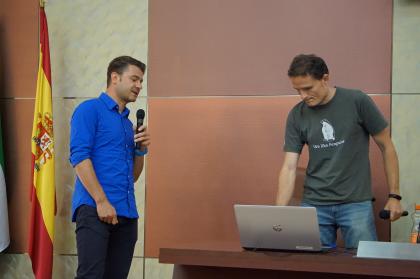
Sebastian Kügler and Marco Martin. Right after the first day's keynote (slides), Marco Martin and Sebastian Kügler caught the general audience up in their presentation "Plasma: State of the Union". Sebas talked about how the architecture around Frameworks 5 and Plasma 5 worked out very well, and how the 5.8 LTS release was received positively, especially by the users who value stability and predictability.
Marco then presented a number of new features that have been added to Plasma since last year's Akademy and that are planned for the upcoming 5.11 release. There is the improved integration for web browsers, better support for touchscreens, enhancements in the taskbar, return of the App Menu (Global Menu), encrypted volumes through Plasma Vault, more elegant artwork, a redesign of the System Settings user interface, and many more.
The KDE Store has gained a lot of traction since its relaunch at Akademy 2016, and now even allows its contributors to receive donations directly from happy users. (Full disclosure: Your editor was able to buy a pizza last week from donations coming through this new feature in the KDE Store).
Plans for the future of Plasma include getting the Wayland port ready for end-users, and thereby delivering on the promise of smoother graphics, a leaner graphics stack, better protocol semantics, improved high-DPI support and more features for touchscreens and convertible devices (such as edge-swipe support).
Plasma's Vision
Another talking point which deserves a special mention is Plasma's vision statement. The statement had been discussed on Plasma's mailing list and on KDE's Phabricator collaboration tool over the last couple of months, and it is now finalized. Plasma's vision statement reads:
"Plasma is a cross-device work environment by the KDE Community where trust is put on the user's capacity to best define her own workflow and preferences.
Plasma is simple by default, a clean work area for real-world usage which intends to stay out of your way. Plasma is powerful when needed, enabling the user to create the workflow that makes her more effective to complete her tasks.
Plasma never dictates the user's needs, it only strives to solve them. Plasma never defines what the user is allowed to do, it only ensures that she can.
Our motivation is to enable actual work to happen, across devices, across different platforms, using any application needed.
We build to be durable, we create to be usable, we design to be elegant."Its cornerstones are stability, usability (which includes features to make the users' lives easier) and elegance, meaning that the team aims to create stable software that helps users get their job done elegantly, but swiftly and with pleasure. For a more detailed explanation of Plasma's vision, head over to sebas' weblog.
Halium Unifies Mobile Linux
Bhushan Shah, maintainer of Plasma's user interface for mobile devices, talked in detail (slides) about the latest endeavour - Project Halium. Halium is a collaboration that aims to share the development effort among several groups. By creating a common base, Project Halium wants to make it easier to bring Plasma Mobile to a wider range of devices. In just a few months, Halium has not only allowed Plasma Mobile to run on its new reference device (the Google Nexus 5X), but has also provided the basis for ports to the Fairphone 2 and a few other handsets.
With other Free software mobile stacks (such as Ubuntu Touch and Firefox OS) being discontinued, Plasma Mobile positions itself as the best option to create truly Free and community-developed mobile devices. While its development is not very fast-paced, its continued improvements begin to bear fruit. This makes Plasma Mobile an increasingly attractive platform for people and companies that want to escape the Duopoly of today's smartphone market and bring something entirely new to the table.
Kirigami Makes Convergence
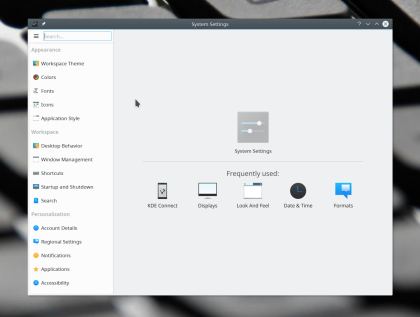
System Settings' new user interface. Most of today's applications are written using QWidgets, which is still the most powerful tool for certain kinds of applications. QWidgets does have some graphical limitations, which may sound bad, but this limitation leads to more consistent UIs across applications. Using QWidgets makes it difficult to deviate from the human interface guidelines (HIG) too much, thus enforcing visual consistency.
This is about to change. Qt is investing heavily into QML, which has fewer graphical limitations, putting more power into developers' hands. A side-effect, however, is that it makes it (too) easy to create applications visually and interactively inconsistent with each other.
Kirigami was born both as a human interface guideline (HIG) and a framework implementing it. Kirigami has been stabilized over the past year and will be released together with KDE Frameworks 5 starting August 2017.
Kirigami provides the skeleton for applications, allowing developers to write visually and interactively consistent applications with little effort. While it seems that Kirigami limits the endless flexibility that QtQuick-based UIs offer, it solves common problems of in-app navigation. Moreover, it solves the lack of consistency across applications, providing uniformity and reducing the need to 'learn' a new application. In order to think outside of the box, you need a box in the first place, and Kirigami provides that box.One example of a Kirigami app is Koko, a simple QML-based image viewer. Although Koko never received any real designer input, it has been resurrected as a Google Summer of Code project by Atul Sharma, and has been redesigned to be a textbook case for Kirigami. Other Kirigami-based applications are Discover (Plasma's software center), the new System Settings user interface (to be released with Plasma 5.11), and of course, Kirigami's first adopter: Subsurface Mobile, an application for logging scuba dives. Kirigami provides a morphing UI, which allows creating applications that work equally well on desktop and mobile. With Kirigami, creating a convergent application is a breeze.
The main target platforms for Kirigami are Plasma Desktop and Plasma Mobile, with the convenient side-effect of working nicely on Android. While we care a lot about following the look of Material on Android, we're not interested so much in the feel. With Plasma Mobile, we want to innovate without the legacy that Android and iOS have on their top-heavy UIs. Such interfaces are very hard to use with a single hand on big screen phones, and this is something we want to avoid.
Kai Uwe Broulik wins Akademy Award for Plasma
Kai Uwe Broulik, a Plasma Hacker extraordinaire, was lauded an Akademy Award this year for his work on Plasma. As the developer behind features like the App Menu, web-browser integration, and many other cool features big and small, Kai is a tireless and positive force that many of his teammates follow as a role model. The award, which also reflects positively on the rest of the Plasma team, is well-deserved and received gratefully.
Swapnil Bhartiya interviewed Kai shortly after the Akademy Awards ceremony. In this interview, Kai reveals his ideas and thoughts on Plasma and the desktop in general. It's well worth watching.
Birds-of-a-feather
On Monday, the Plasma team held a day-long birds-of-a-feather (BoF) session. BoFs are collaborative meetings where everyone with the same interest is welcome to participate. The sessions are focused on making plans and finding solutions for problems that need face-to-face interaction. Naturally, they are also a great opportunity to look into the developers' kitchen. Let's take a peek!
The Plasma team plans to improve support for convertible devices (laptops with touchscreens and detachable keyboards). In order to do that, some improvements to the virtual keyboards are planned.
Other aspects that need improvement include screen rotation, sensors support, and the appearance of the UI when used with one's finger. Furthermore, the team talked at length about structuring the (somewhat dynamically grown) battery of QtQuick imports in a more logical way.
Finally, a BoF session on Wayland resolved a number of problems in applications using Wayland, leading to direct results. For example, KMail will support the Wayland display server natively in an upcoming releases.
Changes planned for Plasma Mobile include a more efficient and clean implementation of the top panel, better backend-sharing between desktop components and mobile UIs, and better support for third-party applications, especially those left in the rain by the demise of Ubuntu Touch.Akademy provided a great opportunity to prepare for the next big leaps in different areas of Plasma. As always, it was also a wonderful opportunity for the Plasma team to get together, socialize, and keep working as a team of friends.
Dot Categories:
-
Akademy 2019 registration now open
(KDE)

Akademy is free to attend, however you need to register to reserve your space.
Once you have registered, take a look at our guide on how to travel to Milan and check out the accommodation we have arranged and recommend for attendees. We also have a guide on how to get from different locations within Milan to Akademy. This guide also includes information on how to move around the city in general -- useful for sightseeing!
IMPORTANT: All attendees are expected to read and required to follow Akademy's Code of Conduct.
Badges
Show your friends you are attending Akademy 2019 by displaying a badge on your blog, your website or social media account:
About Akademy
For most of the year, KDE - one of the largest free and open software communities in the world - works online by email, IRC, forums and mailing lists. Akademy provides all KDE contributors the opportunity to meet in person to foster social bonds, work on concrete technology issues, consider new ideas, and reinforce the innovative, dynamic culture of KDE. Akademy brings together artists, designers, developers, translators, users, writers, sponsors and many other types of KDE contributors to celebrate the achievements of the past year and help determine the direction for the next year. Hands-on sessions offer the opportunity for intense work bringing those plans to reality. The KDE community welcomes companies building on KDE technology, and those that are looking for opportunities. For more information, please contact the Akademy Team.
Dot Categories:
-
KDE at Asian FOSS conferences
(KDE)
It feels great to say that KDE has active contributors across the globe. Two KDE contributors recently presented talks in Asia about their work and encouraged new contributors to join us and get started.
Hong Kong Open Source Conference 2017
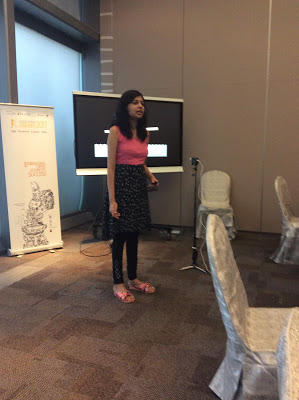
Heena in Hong Kong Heena Mahour presented a talk on ‘KDE : Journey of a SoK student to GCI organization administrator’ at Hong Kong Open Source Conference 2017.
HKOSCon is an open source event held in Hong Kong which aims to showcase and promote open source projects and activities happening across the globe.
Heena discussed her experience as a Season of KDE student which was her initial project and how she continued contributing to KDE afterwards. She also talked about recent trends in the community outreach program Season of KDE and her insight into the Plasma projects as an example of the vastness of KDE.
Heena also discussed the contributions made by KDE in Google Code-In, encouraging the students to get started with it. She provided information about GCompris and Pairs and a word cloud from Season of KDE Twitter posts and listed the contributions she had made so far.
It was amazing to help the new contributors join the KDE community in a similar fashion as to how her mentors helper her.
FOSSASIA 2017
Anu Mittal presented a talk on ‘K’oding with KDE at FOSSASIA 2017, Singapore.
At the FOSSASIA conference, many communities showcased their hardware, designs, graphics, and software. Anu talked about KDE, what it aims at, the various programs that KDE organizes to help budding developers, and how they are mentored. She walked through all the steps to start contributing in KDE by introducing the audience to KDE bug tracker, the IRC channels, various application domains, and the Season of KDE proposal format.
She also shared her journey in KDE, talked briefly about her projects under Season of KDE and Google Summer of Code. The audience were really enthusiastic and curious to start contributing in KDE. Overall her experience working in KDE has been very enriching. She wished to share her experiences to help budding developers get started.
It was interesting to see an emerging interest to participate and contribute to open source. KDE is one of the projects students are keen to contribute to. We do hope we, together as a community, keep it blooming more.
-
GNOME Foundation opens recruitment for further expansion
(GNOME)
Orinda, CA. Today, July 6th 2018, the GNOME Foundation has announced a number of positions it is recruiting for to help drive the GNOME project and Free Software on the desktop. As previously announced, this has been made possible thanks to a generous grant that the Foundation has received, enabling us to accelerate this expansion. […]
-
KDE PIM Newcomers
(KDE)
With Akademy in full swing, we thought we'd treat you all on a conversation with a handful of newcomers to the KDE PIM team. The conversation took place both online over the last months and offline at Akademy yesterday. Let's start with introductions, in order of their replies.
Guy Maurel is French, almost 67 and retired. Having studied electrical engineering, he has seen the first coax cables forming an intranet and later managed DNS, mail and router systems following the growth of the IT industry. He's been using Linux for a while and when a student told him he should be contributing to Open Source, he decided to join KDE PIM.
Daniel Vrátil lives in Brno, Czech Republic and works at Red Hat, maintaining KDE on Fedora and working 'upstream'. He hacks on Telepathy, KScreen and recently became maintainer of the Akonadi framework. He's also the team lead of the local Akademy team this year!
Sandro Knauß is a 29 year old German who, since finishing studying physics, has been working as an IT freelancer. He's been in touch with KDE since he was 17, having used several distributions since starting with SUSE. When his current distribution (Debian) moved to KMail 2 he decided to join its development, fixing the crypto message part and getting hooked after that. He also hacks on ownCloud and maintains packages for Debian.
Michael Bohlender, Mike for the English speaking crowd, studied social anthropology with a minor in computer science. He initially started to contribute to Plasma Active and got into KDE PIM hacking through his GSOC project for developing a touch mail client. He's still mostly hacking on this client as well as QML components around mail data.
Scarlett Clark, hailing from Portland, USA, has been an avid Linux user since about 1998. She has a BA in Computer Information Systems and a background in System administration and web design. She's interested in learning more about technical writing and decided to put some effort into the documentation of her beloved OS. KDE PIM, and KMail in particular, is the lucky project she started with.
What are you up to now?
Sandro was first to explain more about what he's up to: "I was very interested in KMail 2 because I thought that the architecture with Akonadi is a very good approach. A friend of mine switched to KMail 2 two years ago and I was very disappointed about the crypto support. Then a year ago I had time and started to look at the code and searched for the bugs in the code. When I heard about the PIM sprint in berlin, I was very enthusiastic and hoped to find a person to help me fix the crypto stack. At the sprint Volker and I prepared one bug fix. The sprint motivated me to make the bug fix nice and shiny and I started to close a bunch of bugs in the crypto stack. In the long run I would like to make the crypto support as good and shiny as possible."
He added a call for help: "I'm looking for a UI Person, who likes to make the interface for sending encrypted messages better. Now, sending a crypto message requires clicking through up to five dialogs and I can't imagine that this can not be done better".
Things are now even more exciting for Sandro: during the course of this interview, he was employed by Kolab to work on the KDE PIM stack, including the libraries, UI, kolab-utils and so on. "For me it makes things easier to get paid regulary to work complety for an Open Source project. I'll hope both side will profit from my work: KDE PIM and Kolab".
Dan continued: "Most of the time I spend on KDE development is hacking on Akonadi - adding new features, improving speed and of course fixing existing bugs. Occasionally I'm improving the IMAP resource, usually when a bug gets into the way of my workflow I'm also maintaining Akonadi resources for integration with Google Contacts, Calendars and Tasks services and the library with Google API implementation, LibKGAPI. This is a special project for me, as it was my first code I contributed to KDE few years ago and through it I got involved with the awesome KDE PIM community".
Scarlett explains that she has moved on to doing packaging for Kubuntu: "I have been an avid Open Source user for 15 years, so I decided to find a place for me to become a contributor and hopefully with time, a career. Documentation seemed like a great entry point, so I jumped in and was received with a lot of kindness and help from the KDE team. While I still do some documentation, I have started packaging for Kubuntu and absolutely love it, so packaging > documentation right now and in the future".
KDE folk and Akademy
With the KDE Akademy Conference going on, it made sense to ask the interviewees about their thoughts around meeting KDE people.
Dan is part of the local team organizing Akademy this year. He "first attended Akademy in Tallin in 2012, to finally put faces to IRC nicknames. Meeting all the nice KDE people there was probably the main reason I decided to get more involved in KDE (PIM). I always enjoy meeting fellow KDE hackers on Akademy and various sprints and conferences, as it means lots of fun, hugs, beer and hacking (not strictly in this order ;-)) and builds these special relationships that make working on KDE pure pleasure for me."
Scarlett went from "I always would have loved to go to something like Akadamy, but being in the US makes it difficult to swing a trip like that" to "Courtesy of Ubuntu donors I am attending Akademy this year!". Her first day is over and she told us that it "is really awesome! I've talked to so many people that I worked with online..."
Sandro has already visited the Desktop Summit in Berlin in the past, describing it as "very amazing, to get in touch with all the people I read about. On the other side, it was hard to remember so many people, because I didn't know anyone before. When I wasn't shy to ask, the people were all very nice and chatty. It is much easier to get into touch with people at sprints, because there are less people".
Michael, also at Akademy, shared "the AGM meeting wasn't very exciting but the first conference day was awesome". Meanwhile, he is working on a new mail client, build on the KDE libraries and work that was done earlier to make Akonadi and KDE PIM ready for Frameworks. He has brought this idea up on the forums and has gotten help and mockups from the design and usability teams.
At Akademy, the PIMsters both new and old will be coming together at a KDE PIM BoF on Tuesday the 9th in room 4 and there'll be plenty of work and conversation going on for sure!
Dot Categories:
-
WikiToLearn Reaches 1.0
(KDE)
WikiToLearn is KDE's project to create textbooks for university and school students. It provides free, collaborative and accessible text books. Academics worldwide contribute in sharing knowledge by creating high quality content.
One year after founding WikiToLearn, the love for sharing knowledge helped our community to grow stronger. During this year a lot of great things happened, but we also had to face some technical and organizational problems.
The effort and work of our community during the last months helped us to achieve great results developing new features and improving our platform, concentrating on the editing experience. As a result of this, we are very proud to announce the release of WikiToLearn 1.0!
Here are some new features:
- New skin: we rebuilt the whole skin for a better user experience. Users will now be able to take and review notes, create books and share knowledge more easily.
- Course editor: this tool allows users to create and manage courses in a guided and very effortless way
- Visual editor: together with Course editor this tool will help users to contribute easily; editing and reviewing has become more intuitive and it’s not necessary anymore to be a “wikitext expert” to work on our platform
Having reached the goal of a more comfortable user interface, to make it more easy for you to contribute, our next objective is to expand the content on all of our pages. Since we already have some content on our Italian and English pages, we would also very much appreciate if you would help us to develop the pages in other languages.
Get started now, visit WikiToLearn.org right away and get in touch with our new features!
L'actualité de cette partie est agrégé automatiquement à partir d'autres sites.
Contenus ©2006-2024 Benjamin Poulain
Design ©2006-2024 Maxime Vantorre

